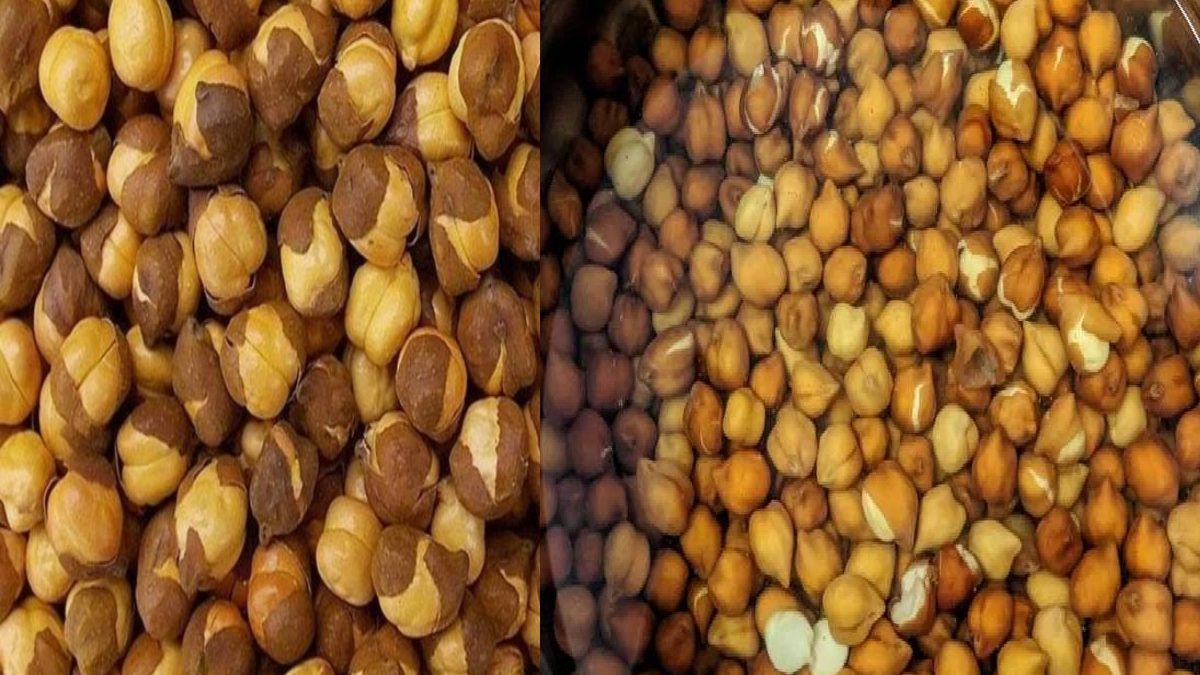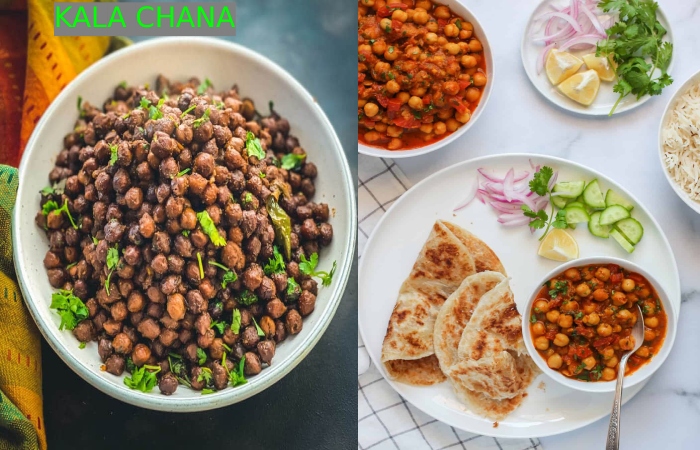Table of Contents
Kala Chana – Explaining – Nutritional Profile
Kala Chana, or Chickpea in India, is perhaps one of the few ingredients that can serve as a staple in the main course, a healthy snack on a lazy weekend or just something to nibble on for killing your boredom hunger.
Also known as Chole in Northern India, these globules that come in black and white colours are primary ingredients in the Indian kitchen and a backbone of Indian agriculture. It produces 67% of the world’s whole chickpeas.
Health Benefits in Kala Chana
Black chickpeas offer a wide range of health benefits. Being complex carbohydrates, these legumes contain both soluble and insoluble fibre and aid in the functioning of the digestive tract. Boiling black chickpeas is a lengthy process, and it is advisable to pressure cook these tiny globules to cut down on time and store nutrients.
Aids in Weight Loss
Cardiovascular Benefits
Lowers Cholesterol
Stabilizes Blood Sugar and Low Glycemic Index
Prevention of Diabetes
Great Source of Iron
The two widely available varieties in India are Kala Chana, and Kabuli Chana are also known as Bengal gram, Garbanzo, garbanzo bean, and Egyptian pea. These yummy legumes are also popular as Kondaikadali in Tamil, Senagalu in Telugu, Kadala in Malayalam and Kadale in Kannada.
Cuts Down Cholesterol Levels with Kala Chana
Chickpeas, high in soluble fibre, prevent bile acids from getting absorbed into the body and reduce LDL cholesterol and total triglycerides. Studies reveal that the amounts of dietary fibre found in black chana are far more superior and effective than other legumes.
Though India is one of the leading producers of chickpeas today, its origins are date back to the 13th century. While the traditional name Chickpea, from French word choice and cicer where another modern name Garbanzo came straight from Spanish. In the western world, chickpeas have always occupied a prominent position in cuisine and medicine.
Until the 17th century, roasted and grounded chickpeas were a substitute for Europe’s coffee. Chickpeas were associated with Venus, the Roman Goddess, for beauty and love as it improves fertility by increasing sperm production, stimulating menstruation and lactation.
Even though we find chickpeas mostly in black and white varieties, scientists have discovered more than 90 genotypes, including wild species.
Uses of Kala Chana for Skin & Hair
Kala Chana is a legume loaded with nutrients such as protein, fibre and carbohydrates. It is an incredible source of vitamins like B6, C, folate, niacin, thiamin, riboflavin and minerals including manganese, phosphorus, iron and copper. The wealth of nutrients in Kala Chana is beneficial in boosting the immune system, promoting muscle mass, regulating diabetes, and enhancing hair, skin, and nail health.
Calories 210
Fat 3.8g
Sodium 322mg
Carbohydrates 35g
Fibre 9.6g
Sugars 6g
Protein 10.7g
Choose Chickpeas
Always go for dried chickpeas. Kala Chana has a dark and rough texture, while Kabuli Chana exudes smooth exteriors. Make sure peas are not faded. If you are going for canned chickpeas, read the label to know other components like sodium. Go for those with less salt content to control blood pressure.
If you plan to sprout chickpeas, soak them overnight and drain water; pat dries the following day. Allow it to dry under room temperature to grow in two days. You can also refrigerate soaked chickpeas for two days and use them in curries, dals and salads.
Kala Chana in Ayurveda
Known as Chanaka in Ayurveda and grouped as legumes – Shimbi Dhanya Varga, Kala Chana is a super source of protein. Add this to your daily diet not just for significant nutritional value but also for preventing many health conditions, including high cholesterol, liver enlargement, mouth ulcers, skin ailments etc.
Interestingly, chickpeas exhibit different properties on the body, depending on how they have been. According to Ayurveda, Kala Chana balances all three doshas – Vata, Kapha and pitta- preferred over the white or Kabuli chana variety.
The ancient medicine describes Chana as astringent to taste with Shita Virya or cold potency, dry in nature, easy to digest but causing constipation. While it effectively balances pitta and Kapha doshas, it also increases Vata dosha and is recommended for those suffering from high body temperature and blood-related problems
To Cook Boiled and Steamed Kala Chana
Kala Chana soaked in water for over 8 hours and then boiled in hot water till tender calls Adrabhista and plays a significant role in improving immunity, building physical strength and improving taste buds. If these legumes are boiled and then steamed for a few minutes, it is balances problems caused due to pitta and Kapha doshas.
Dry Roasted Kala Chana
When soaked overnight in water and roasted dry, Kala Chana calls Shushkabrishta. In Bhavaprakasha Nighantu, eating these legumes can aggravate skin conditions and increase Vata dosha as they are in nature.
Slightly Roasted Kala Chana
It in Dhavantari Nighantu that Kala Chana roast in very little oil makes the body feel lighter after consumption flushes out AMA or metabolic toxins and reduces severe fatigue.
Deep-Fried Kala Chana
According to Raja Nighantu, deep-fried Kala Chana balances Vata and Kapha imbalances, reduces cold, improves the functioning of tongue and taste buds and is easy to digest.
Wet Kala Chana
Kala Chana can also without any cooking process. Soak it overnight till it’s tender, and eat a fistful of it along with breakfast for improving sperm count, easy digestion and taste. However, eat in limited quantities to avoid diarrhoea.
Types of Kala Chana & Flours
Whether you are on a gluten-free diet or just attempting to add healthy nutrients to your diet, besan or Bengal gram or garbanzo bean flour is a healthy alternative to some of the most common flours. According to the Gluten-Free cooking school website, 1/4 cup of garbanzo bean flour gives 5 g of dietary fibre and 6 g of protein. Just adding a small amount of garbanzo flour or besan to wheat flour or any GF flour can improve the nutrition of cooked food.
Sometimes there is confusion understanding the difference between chickpeas and flours made out of them.
Chickpeas are of Two Main Kinds
Beige and Dark Brown
White Chickpea
Chickpea is a popular ingredient in the Indian and Mediterranean diets for making curries, hummus, falafel, soups and salads.
Chickpea (garbanzo) flour from beige or white chickpeas is popular in the Italian cuisine for making pancakes. It is available in speciality stores and Italian shops and goes by garbanzo bean flour or farina di Ceci. Besan found in Indian stores is not made by this bean. You’ll read about it under Chana daal.
Conclusion
Kala Chana or Black Chickpeas are wonder ingredients with protein. An array of vitamins, minerals that can meet our nutritional requirements daily. Into delicious recipes, a must-have ingredient in desi kitchens.
The chickpea flour made from Kala Chana serves as a fantastic ingredient in beauty products. Homemade face masks with chickpea flour are pretty popular among all generations. However, moderation is vital while consuming these legumes as it may cause digestive issues like flatulence, diarrhoea, nausea. Go for black chana for your daily dose of protein.


